
- How about winning a flight ticket worth up to US$500?
- Become a member by January 31st and get a chance to win!
Going to Chiapas, Mexico? Get to know the main natural attractions of the Mexican state with the greatest biodiversity.
7min
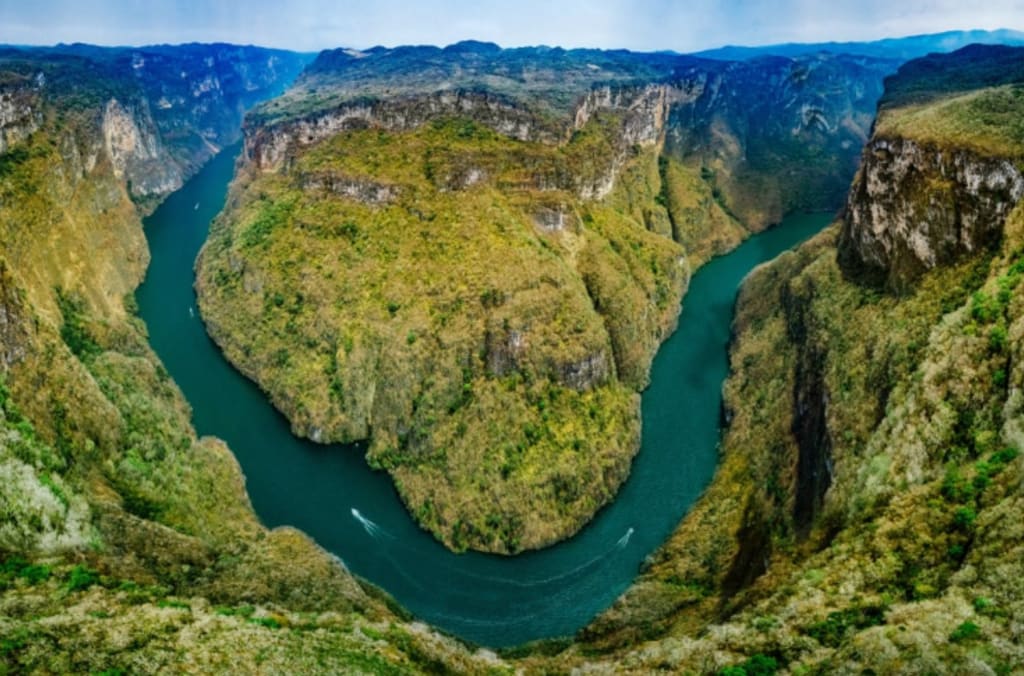
Most tourists go to Chiapas, Mexico, attracted by one or more of these four things: its coffee plantations (you can visit several haciendas such as Hamburgo, Chiripa, Violetas and Santa Rita); the Mayan ruins, of which Palenque is the best known; the colonial architecture, very present in San Cristóbal de las Casas and other magical towns; and its natural attractions.
In this article I’ll focus in the later: the natural beauty of the state, which houses a large percentage of the country's biodiversity. I’ll talk about 8 of the most visited destinations in Chiapas, all known for their beauty and accessibility. Several of them are also excellent examples of ecotourism.
You might also like to read:
Chiapas is the southernmost state of Mexico, bordering Guatemala. Its capital and most populated city is Tuxtla Gutiérrez, but the most touristy one is San Cristóbal de las Casas.
San Cristóbal is a great base to visit the best landscapes of Chiapas, Mexico. The closest airport is in Tuxtla Gutiérrez, from where you can reach the colonial town in a 1:15 hour bus trip. From Mexico City, the trip takes between 13 and 14 hours.
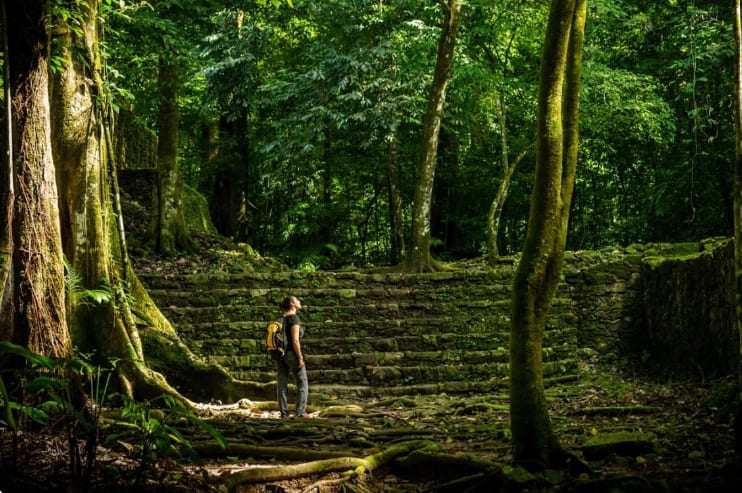
This spectacular canyon formed by the erosion of the Grijalva River, known as Cañón del Sumidero in Spanish, is the most famous natural attraction in Chiapas, Mexico.
A great way to visit it is on a boat excursion along the river, that allows you to fully appreciate the immensity of the rock walls which are over 1000 meters in height. You will also pass by the famous Christmas Tree, a waterfall over a rock formation that, when vegetation grows, resembles its name.
In addition to the boat visit, I recommend taking the tour through the six viewpoints to have the view from above. It is a 17-kilometer journey, which begins at the La Ceiba viewpoint, where you can see the birth of the canyon, and continues with La Coyota, El Roblar, Tepehuaje, Los Chiapa (highest point of the canyon) and ends at La Atalaya.
The Sumidero Canyon National Park is just outside Tuxtla Gutiérrez. From the north of the city begins the Calzada del Sumidero, which is the route that takes you through the viewpoints. Many do it by bicycle, although it is an arduous climb on the way in.
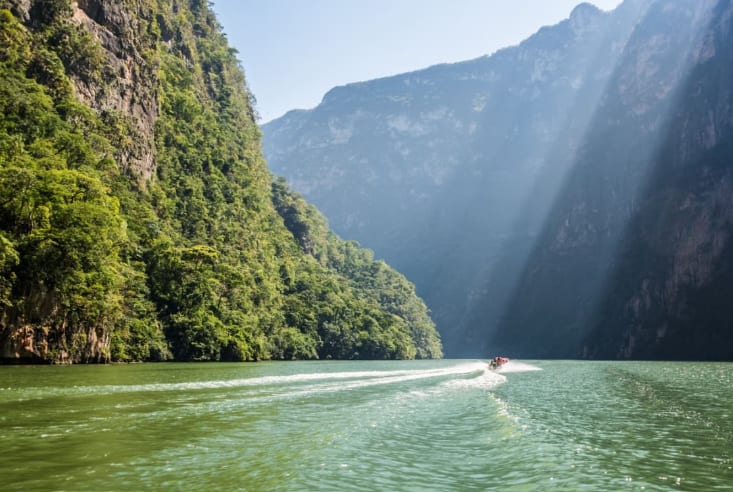
Another fantastic landscape in Chiapas very close to Tuxtla Gutiérrez is the Sima de las Cotorras, within the El Ocote Biosphere Reserve.
A “sima” is chasm, that is, a deep cavity in the earth formed by the movement of plates and erosion of underground rivers. There are several similar formations in the area, even larger ones, but Las Cotorras, 140 meters deep, is the most famous because it’s more prepared for tourism.
Cotorras is the word for “parrots” in Spanish, and you will quickly understand the name when you see and hear the thousands of parrots that fly in circles following the air currents in and out the well where they lay their nests.
Among them is the Mexican green parakeet, which is in danger of extinction. Starting at dusk, the birds gather in the forest at the bottom of the chasm, making a deafening noise.
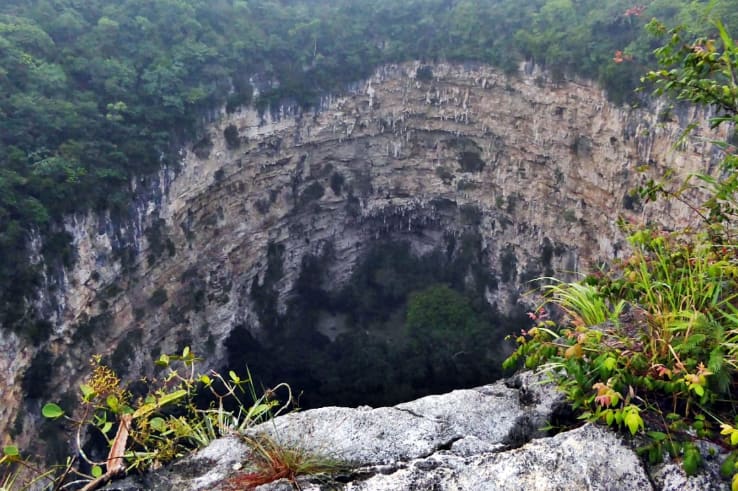
The Cascadas de Agua Azul (Blue Water Waterfalls) are just what their name conveys. No wonder this is considered one of the most beautiful destinations in Chiapas, Mexico. They are located about 150 km from San Cristóbal de las Casas and close to Misol-Ha and Palenque, so visiting all three is an excellent all-day plan.
The Xanil River descends through the heart of Chiapas’ jungle until it meets a series of “steps” that are formed by the erosion of several tributaries. The magnificent color is due to the high calcium carbonate content in the water, which also causes it to cover rocks and fallen trees with a mineral crust.

After taking a dip in the Agua Azul Waterfalls, most tourists go on for another 65 km until they reach one of the most emblematic places in Mexico: the archaeological zone of Palenque.
Although the site was built by humans, the natural environment in which it is located makes it worthy of being on this list of the best landscapes in Chiapas.
The House of the Nobles, the Tomb of the Red Queen, and the Temple of the Inscriptions are the structures that stand out the most in this ancient Mayan city, which is estimated to have been uninhabited around the year 900.
Researchers say it’s likely that only 2% of this immense jungle settlement has been discovered so far, leaving many mysteries among the vegetation.

If you have time, don't miss making a stop at this waterfall halfway between Agua Azul and Palenque.
The 30-meter waterfall falls into a large natural pool surrounded by enormous specimens of mahogany trees and water sticks, perfect for spending a relaxing time. There is also a trail that goes behind the waterfall and gives you a very good view from the opposite angle.
If you saw the movie Predator you will surely recognize this place as it is one of the most recognizable locations from the film.
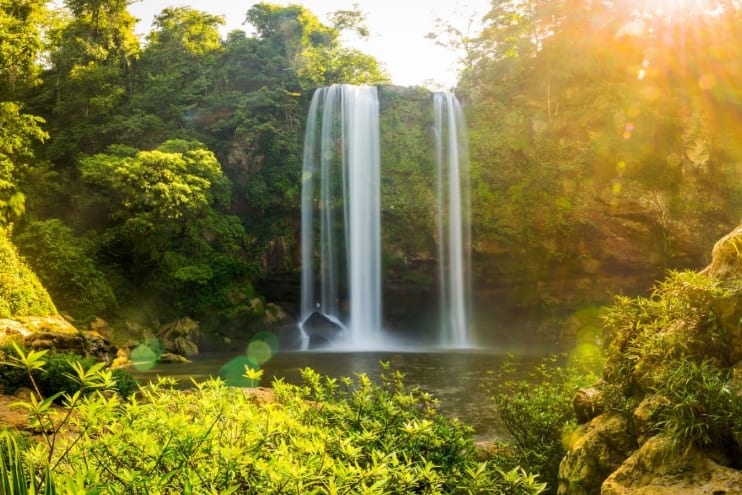
Ready to go in the other direction? 100 kilometers south of San Cristóbal de las Casas are other famous waterfalls of Chiapas, Mexico: those of the El Chiflón Park.
When you arrive at the park you will walk following the turquoise San Vicente River and pass some minor waterfalls, but as you go up it gets better and better, until you reach the wonderful Bridal Veil (Velo de la Novia). In total there are five waterfalls with pools to cool off.
You can get there from San Cristóbal by public transportation, but you will have to dedicate a full day for travel time. First you take a bus from outside the ADO Station to Comitán (1:30 h) and then another one to Chiflón (45 min).
There are excursions that take you to El Chiflón and Montebello, but I think it is better to enjoy each place separately with more time, instead of rushing to cover both in one day.
Extra tip: if you spend the night in Comitán or in the accommodations at the entrance to the park, you will practically have the place to yourself in the morning, since tourists start arriving in large groups around noon.
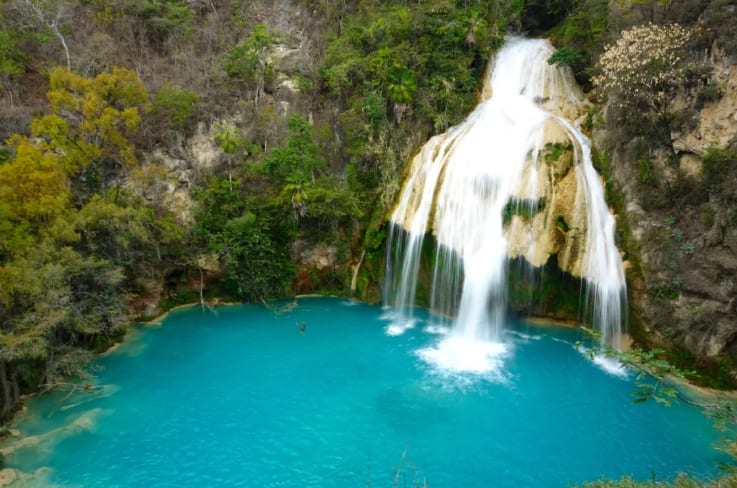
This national park is on the border with Guatemala, about 150 kilometers south of San Cristóbal de las Casas. A good idea is to sleep in Comitán (55 km away) so you have time to combine it with El Chiflón on the same day. Comitán de Domínguez is one of the magical towns of Chiapas.
Within this protected area there are more than 60 lagoons and enormous biodiversity, where many species of birds stand out, such as the quetzal.
Upon arrival there are several trails to do, as well as boat and kayak rides. In addition to the colorful lagoons, there are cenotes, caves, and waterfalls, all in the middle of the dense forest.
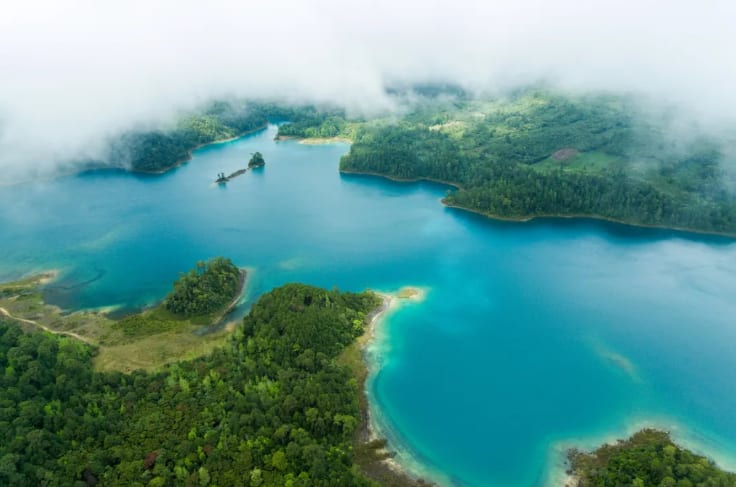
Last but not least, we come to one of the most special destinations in Chiapas, Mexico. The Lacandona jungle is one of the places with the greatest biodiversity on the entire American continent, and the Montes Azules Biosphere Reserve protects more than 300,000 hectares of it.
It is estimated that this space, which occupies only 0.16% of the national territory, houses around 30% of the water reserves and 20% of the biodiversity of Mexico. Since its creation in 1978, the reserve has recovered populations of several species in danger of extinction, such as jaguars, tapirs, white-lipped wild boars, spider monkeys and scarlet macaws.
Within the reserve there are several ecotourism projects, with accommodation and camping areas. During your visit you can follow hiking trails, such as the one that takes you to beautiful Miramar lagoon, or take raft rides on the Lacantún and Usumacinta rivers, which serve as a natural border with Guatemala.
There are also important Mayan archaeological sites in the area, such as Bonampak and Yaxchilán.
Keep reading about Mexico:
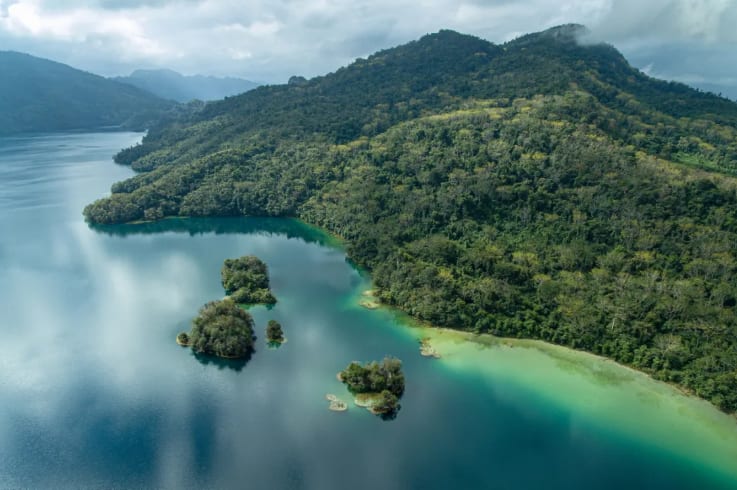
A fantastic opportunity to get to know this region is by volunteering in Chiapas through Worldpackers. On this platform you will find several opportunities to help local projects in exchange for accommodation, meals, and other benefits, depending on the host.
In addition to traveling without paying for accommodation, you will get to spend time with local people, thus learning much more about the culture of the area and reaching places that most tourists overlook. It's also a great way to learn Spanish in Mexico for free.
There are several volunteer programs in San Cristobal de las Casas, which as we saw is the ideal city to base yourself and explore. From hostels to non-profit projects, you can choose a host that matches your skills and interests.
You’ll also find interesting positions in other towns like Tapachula, where you can collaborate with an holistic center or a NGO.
Learn more about volunteering abroad:
These are the 8 best natural attractions in Chiapas, Mexico, but there are many more places to discover if you have time to travel around the state. Your bucket list can also include the Tacaná volcano, Las Nubes waterfalls and Pacific beaches such as Boca del Cielo, Puerto Arista, Barra San Simón, Playa Azul and Puerto Madero.
I hope you liked this article! Follow Worldpackers on social media for more travel tips and inspiration: we are on Instagram and Tiktok.
Write here your questions and greetings to the author